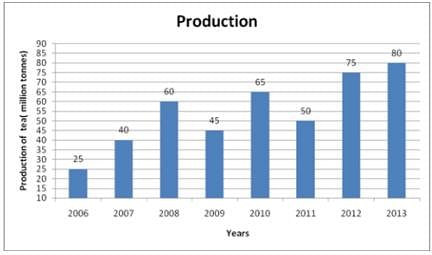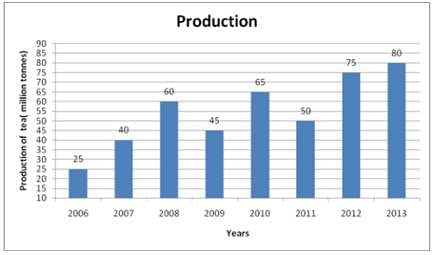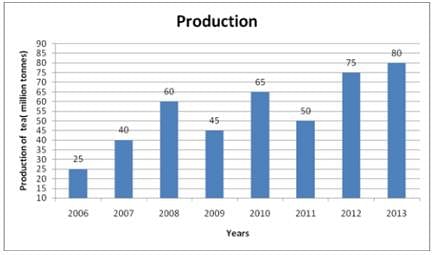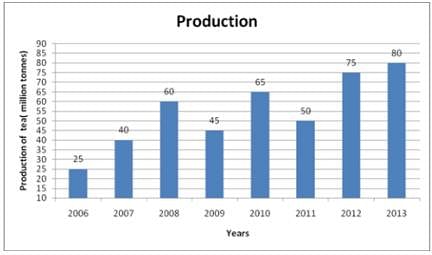HPPSC HPAS Prelims Paper 2 Mock Test - 6 - HPPSC HPAS (Himachal Pardesh) MCQ
30 Questions MCQ Test HPPSC HPAS Mock Test Series 2024 - HPPSC HPAS Prelims Paper 2 Mock Test - 6
Directions (Q. 1-8) Read the following two passages and answer the items that follow each passage. Your answers to these items should be based on these passages only.
Passage 1
"Rent-seeking" is what economists call a special type of money-making: the sort made possible by political connections. This can range from outright graft to a lack of competition, poor regulation and the transfer of public assets to firms at bargain prices. Well-placed people have made their fortunes this way ever since rulers had enough power to issue profitable licences, permits and contracts to their cronies. In America, this system reached its apogee in the late 19th century, and a long and partially successful struggle against robber barons ensued. Antitrust rules broke monopolies such as John D. Rockefeller's Standard Oil. The flow of bribes to senators shrank.
In the emerging world, the past quarter-century has been great for rent-seekers. Soaring property prices have enriched developers who rely on approvals for projects. The commodities boom has inflated the value of oilfields and mines, which are invariably intertwined with the state. Some privatisations have let tycoon's milk monopolies or get assets cheaply. The links between politics and wealth are plainly visible in China, where a third of billionaires are party members.
Capitalism based on rent-seeking is not just unfair, but also bad for long-term growth. As our briefing on India explains, resources are misallocated: crummy roads are often the work of crony firms. Competition is repressed: Mexicans pay too much for their phones. Dynamic new firms are stifled by better-connected incumbents. And if linked to the financing of politics, rent-heavy capitalism sets a tone at the top that can let petty graft flourish. When ministers are on the take, why shouldn't underpaid junior officials be?
Q. Which of the following statements are valid with reference to the above passage?
1. Rent seeking was a fortune maker for the ruler's cronies
2. Only politicians can make money by seeking rent.
What is La Niña commonly associated with in terms of climate impacts?
| 1 Crore+ students have signed up on EduRev. Have you? Download the App |
What is one major consequence of El Niño events on Indian agriculture?
Which of the following describes the Coriolis Effect?
Which areas are particularly vulnerable to landslides in India?
What is a significant natural trigger for landslides?
How does climate change potentially affect the El Niño-Southern Oscillation (ENSO) cycles?
What is the primary purpose of the Model Code of Conduct (MCC) issued by the Election Commission of India (ECI)?
Which of the following is a significant concern regarding the efficacy of the Model Code of Conduct (MCC)?
What change was introduced to the Model Code of Conduct in 2019?
Directions to Solve
In each of the following questions find out the alternative which will replace the question mark.
Question -
College : Student :: Hospital : ?
Read the information given below carefully and answer the following question.
Climate change has triggered the development of renewables and electric vehicles. Whether these vehicles spread as rapidly as predicted, over the next few years they will crowd out the demand for oil substantially. And if climate change concerns intensify, the transformation of the world oil market could be even faster. Even more so if other new technologies, like fuel cells, hydrogen-based power generation, ride sharing and autonomous driving also take off. So even though it is hard to say which way oil prices will go next week or next month, by 2040 oil will be much cheaper than it is today.
Q. Which of the following is the most rational inference from the above passage?
Passage 1
"Rent-seeking" is what economists call a special type of money-making: the sort made possible by political connections. This can range from outright graft to a lack of competition, poor regulation and the transfer of public assets to firms at bargain prices. Well-placed people have made their fortunes this way ever since rulers had enough power to issue profitable licences, permits and contracts to their cronies. In America, this system reached its apogee in the late 19th century, and a long and partially successful struggle against robber barons ensued. Antitrust rules broke monopolies such as John D. Rockefeller's Standard Oil. The flow of bribes to senators shrank.
In the emerging world, the past quarter-century has been great for rent-seekers. Soaring property prices have enriched developers who rely on approvals for projects. The commodities boom has inflated the value of oilfields and mines, which are invariably intertwined with the state. Some privatisations have let tycoon's milk monopolies or get assets cheaply. The links between politics and wealth are plainly visible in China, where a third of billionaires are party members.
Capitalism based on rent-seeking is not just unfair, but also bad for long-term growth. As our briefing on India explains, resources are misallocated: crummy roads are often the work of crony firms. Competition is repressed: Mexicans pay too much for their phones. Dynamic new firms are stifled by better-connected incumbents. And if linked to the financing of politics, rent-heavy capitalism sets a tone at the top that can let petty graft flourish. When ministers are on the take, why shouldn't underpaid junior officials be?
Q. According to the passage, which of the following statement(s) are NOT correct?
1. The rent seeking system ended the struggle against robber barons in America
2. China exemplifies the close relationship between politics and wealth
Passage 1
"Rent-seeking" is what economists call a special type of money-making: the sort made possible by political connections. This can range from outright graft to a lack of competition, poor regulation and the transfer of public assets to firms at bargain prices. Well-placed people have made their fortunes this way ever since rulers had enough power to issue profitable licences, permits and contracts to their cronies. In America, this system reached its apogee in the late 19th century, and a long and partially successful struggle against robber barons ensued. Antitrust rules broke monopolies such as John D. Rockefeller's Standard Oil. The flow of bribes to senators shrank.
In the emerging world, the past quarter-century has been great for rent-seekers. Soaring property prices have enriched developers who rely on approvals for projects. The commodities boom has inflated the value of oilfields and mines, which are invariably intertwined with the state. Some privatisations have let tycoon's milk monopolies or get assets cheaply. The links between politics and wealth are plainly visible in China, where a third of billionaires are party members.
Capitalism based on rent-seeking is not just unfair, but also bad for long-term growth. As our briefing on India explains, resources are misallocated: crummy roads are often the work of crony firms. Competition is repressed: Mexicans pay too much for their phones. Dynamic new firms are stifled by better-connected incumbents. And if linked to the financing of politics, rent-heavy capitalism sets a tone at the top that can let petty graft flourish. When ministers are on the take, why shouldn't underpaid junior officials be?
Q. The reason petty corruption in politics flourished is :
Passage 1
"Rent-seeking" is what economists call a special type of money-making: the sort made possible by political connections. This can range from outright graft to a lack of competition, poor regulation and the transfer of public assets to firms at bargain prices. Well-placed people have made their fortunes this way ever since rulers had enough power to issue profitable licences, permits and contracts to their cronies. In America, this system reached its apogee in the late 19th century, and a long and partially successful struggle against robber barons ensued. Antitrust rules broke monopolies such as John D. Rockefeller's Standard Oil. The flow of bribes to senators shrank.
In the emerging world, the past quarter-century has been great for rent-seekers. Soaring property prices have enriched developers who rely on approvals for projects. The commodities boom has inflated the value of oilfields and mines, which are invariably intertwined with the state. Some privatisations have let tycoon's milk monopolies or get assets cheaply. The links between politics and wealth are plainly visible in China, where a third of billionaires are party members.
Capitalism based on rent-seeking is not just unfair, but also bad for long-term growth. As our briefing on India explains, resources are misallocated: crummy roads are often the work of crony firms. Competition is repressed: Mexicans pay too much for their phones. Dynamic new firms are stifled by better-connected incumbents. And if linked to the financing of politics, rent-heavy capitalism sets a tone at the top that can let petty graft flourish. When ministers are on the take, why shouldn't underpaid junior officials be?
Q. Which of the following is caused by rent heavy Capitalism?
1. Competition is repressed
2. Inflation occurs
3. Bribery flourishes
4. Long term growth suffer
Passage 2
Newton's surprising success at developing the laws of motion, as well as the development and refinement of other physical laws, led to the idea of scientific determinism. The first expression of this principle was in the beginning of the nineteenth century by Laplace, a French scientist. Laplace argued that if one knew the position and velocity of all the particles in the universe at a given time, the laws of physics would be able to predict the future state of the universe.
Scientific determinism held sway over a great many scientists until the early twentieth century, when the quantum mechanics revolution occurred. Quantum mechanics introduced the world to the idea of the uncertainty principle, which stated that it was impossible to accurately measure both the position and the velocity of a particle at one time. Because Laplace's omniscience could never occur, even in theory, the principle of scientific determinism was thrown into doubt. However, quantum mechanics does allow for a reduced form of scientific determinism. Even though physicists are unable to know precisely where a particle is and what its velocity is, they can determine certain probabilities about its position and velocity. These probabilities are called wave functions. By use of a formula known as the Schrodinger equation, a scientist with the wave function of a particle at a given time can calculate the particle's future wave function. These calculations can give the particle's position or velocity, but not both. Thus, the physicist is in possession of exactly half of the information needed to satisfy Laplace's view of determinism. Unfortunately, under modern physics theories, that is far as any researcher can go in predicting the future.
Q. The passage suggests that if scientific determinism were TRUE:
Passage 2
Newton's surprising success at developing the laws of motion, as well as the development and refinement of other physical laws, led to the idea of scientific determinism. The first expression of this principle was in the beginning of the nineteenth century by Laplace, a French scientist. Laplace argued that if one knew the position and velocity of all the particles in the universe at a given time, the laws of physics would be able to predict the future state of the universe.
Scientific determinism held sway over a great many scientists until the early twentieth century, when the quantum mechanics revolution occurred. Quantum mechanics introduced the world to the idea of the uncertainty principle, which stated that it was impossible to accurately measure both the position and the velocity of a particle at one time. Because Laplace's omniscience could never occur, even in theory, the principle of scientific determinism was thrown into doubt. However, quantum mechanics does allow for a reduced form of scientific determinism. Even though physicists are unable to know precisely where a particle is and what its velocity is, they can determine certain probabilities about its position and velocity. These probabilities are called wave functions. By use of a formula known as the Schrodinger equation, a scientist with the wave function of a particle at a given time can calculate the particle's future wave function. These calculations can give the particle's position or velocity, but not both. Thus, the physicist is in possession of exactly half of the information needed to satisfy Laplace's view of determinism. Unfortunately, under modern physics theories, that is far as any researcher can go in predicting the future
Q. According to the passage, wave functions:
Passage 2
Newton's surprising success at developing the laws of motion, as well as the development and refinement of other physical laws, led to the idea of scientific determinism. The first expression of this principle was in the beginning of the nineteenth century by Laplace, a French scientist. Laplace argued that if one knew the position and velocity of all the particles in the universe at a given time, the laws of physics would be able to predict the future state ofthe universe.
Scientific determinism held sway over a great many scientists until the early twentieth century, when the quantum mechanics revolution occurred. Quantum mechanics introduced the world to the idea of the uncertainty principle, which stated that it was impossible to accurately measure both the position and the velocity of a particle at one time. Because Laplace's omniscience could never occur, even in theory, the principle of scientific determinism was thrown into doubt. However, quantum mechanics does allow for a reduced form of scientific determinism. Even though physicists are unable to know precisely where a particle is and what its velocity is, they can determine certain probabilities about its position and velocity. These probabilities are called wave functions. By use of a formula known as the Schrodinger equation, a scientist with the wave function of a particle at a given time can calculate the particle's future wave function. These calculations can give the particle's position or velocity, but not both. Thus, the physicist is in possession of exactly half ofthe information needed to satisfy Laplace's view ofdeterminism. Unfortunately, under modern physics theories, that is far as any researcher can go in predicting the future.
Q. Which of the following best describes the organization of the passage?
Passage 2
Newton's surprising success at developing the laws of motion, as well as the development and refinement of other physical laws, led to the idea of scientific determinism. The first expression of this principle was in the beginning of the nineteenth century by Laplace, a French scientist. Laplace argued that if one knew the position and velocity of all the particles in the universe at a given time, the laws of physics would be able to predict the future state of the universe.
Scientific determinism held sway over a great many scientists until the early twentieth century, when the quantum mechanics revolution occurred. Quantum mechanics introduced the world to the idea of the uncertainty principle, which stated that it was impossible to accurately measure both the position and the velocity of a particle at one time. Because Laplace's omniscience could never occur, even in theory, the principle of scientific determinism was thrown into doubt. However, quantum mechanics does allow for a reduced form of scientific determinism. Even though physicists are unable to know precisely where a particle is and what its velocity is, they can determine certain probabilities about its position and velocity. These probabilities are called wave functions. By use of a formula known as the Schrodinger equation, a scientist with the wave function of a particle at a given time can calculate the particle's future wave function. These calculations can give the particle's position or velocity, but not both. Thus, the physicist is in possession of exactly half of the information needed to satisfy Laplace's view of determinism. Unfortunately, under modern physics theories, that is far as any researcher can go in predicting the future
Q. Which of the following, if true, would most strengthen the author's conclusion in the passage's final sentence?
Directions for the following 4 (four) questions:
Following table shows tea production data of India for various years. Study the following graph and answer the questions.

Q. Which year has maximum increment in percentage value compared to previous year?
Following table shows tea production data of India for various years. Study the following graph and answer the questions.

Q. What is percentage increase in production for 2013 when compared with 2008?
Following table shows tea production data of India for various years. Study the following graph and answer the questions.

Q. Out of eight years, in how many years production was lesser than simple average of all eight years?
Following table shows tea production data of India for various years. Study the following graph and answer the questions.

Q. What is difference between simple average of first four years and last four years?
The number of solutions of (x2 + 1)2 + 2(x2 + 1) - 3 = 0 is equal to
If f(x) = x - 4, then what is value of f(f(3)) = ?
Which of the following has maximum value?
P and Q are two real numbers.
How many solutions do the equation 1/x + 1/(x + 1) = 1/3 have?
Let f(x) = 2x + 4. Which of the following statements is true?












